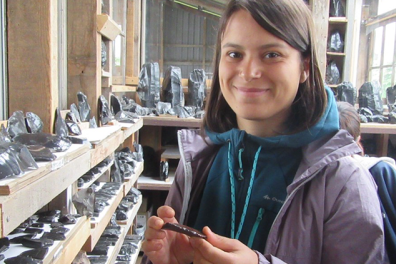Sania Carbone, winner of the 1st FFJ/Christian Polak 2022 Prize

With a BA in Art History and Archaeology from the Université Paris Sorbonne and an LLCER degree in Japanese from Inalco, Sania Carbone obtained a Master's degree in Humanities from Tokyo Metropolitan University in 2020, writing a dissertation on the principles and methods of urban archaeology in France and Japan. She completed her training with a master's degree in Japanese studies at Inalco, where she studied monastic settlements in the medieval period. Alongside her academic studies, Sania Carbone has taken part in numerous archaeological digs, mainly in France but also in Japan, giving her a solid practical training. Since October 2021, within the doctoral school n°265 and the French Institute for Research on East Asia - IFRAE (Inalco-Université Paris Cité-CNRS), she has been pursuing her research on the birth of the city and the formation of the medieval Japanese urban network through the study of the Hiraizumi archaeological site.
Urbanization around monastic complexes in the medieval period
Summary
From the 1960s onwards, the discovery and excavation of the port city of Kusado Sengen (Hiroshima Prefecture), followed by those of the city under the castle of Ichijôdani (Fukui), proved the necessity of using archaeology to study medieval cities. Since then, archaeological excavations have multiplied throughout the archipelago, considerably enriching our knowledge of medieval town planning. However, one phenomenon remains little studied by archaeologists: urbanization around the great monastic complexes. Yet the exceptional remains of paved roads, stone walls and housing unearthed at the sites of Binman-ji (Shiga), Negoro-ji (Wakayama) and Heisen-ji (Fukui) prove that these temples were surrounded by a vast, complexly structured agglomeration housing a wide variety of activities. Thus, drawing on the results of archaeological excavations at these three sites, this dissertation interrogates the role of temples in urban development in the medieval and Edo periods.
The Fondation France-Japon de l'EHESS has been awarding the prix FFJ/Christian Polak designed to reward the scientific excellence and academic merit of a master's thesis on Japan from an areal or comparative perspective, across all humanities and social sciences disciplines.